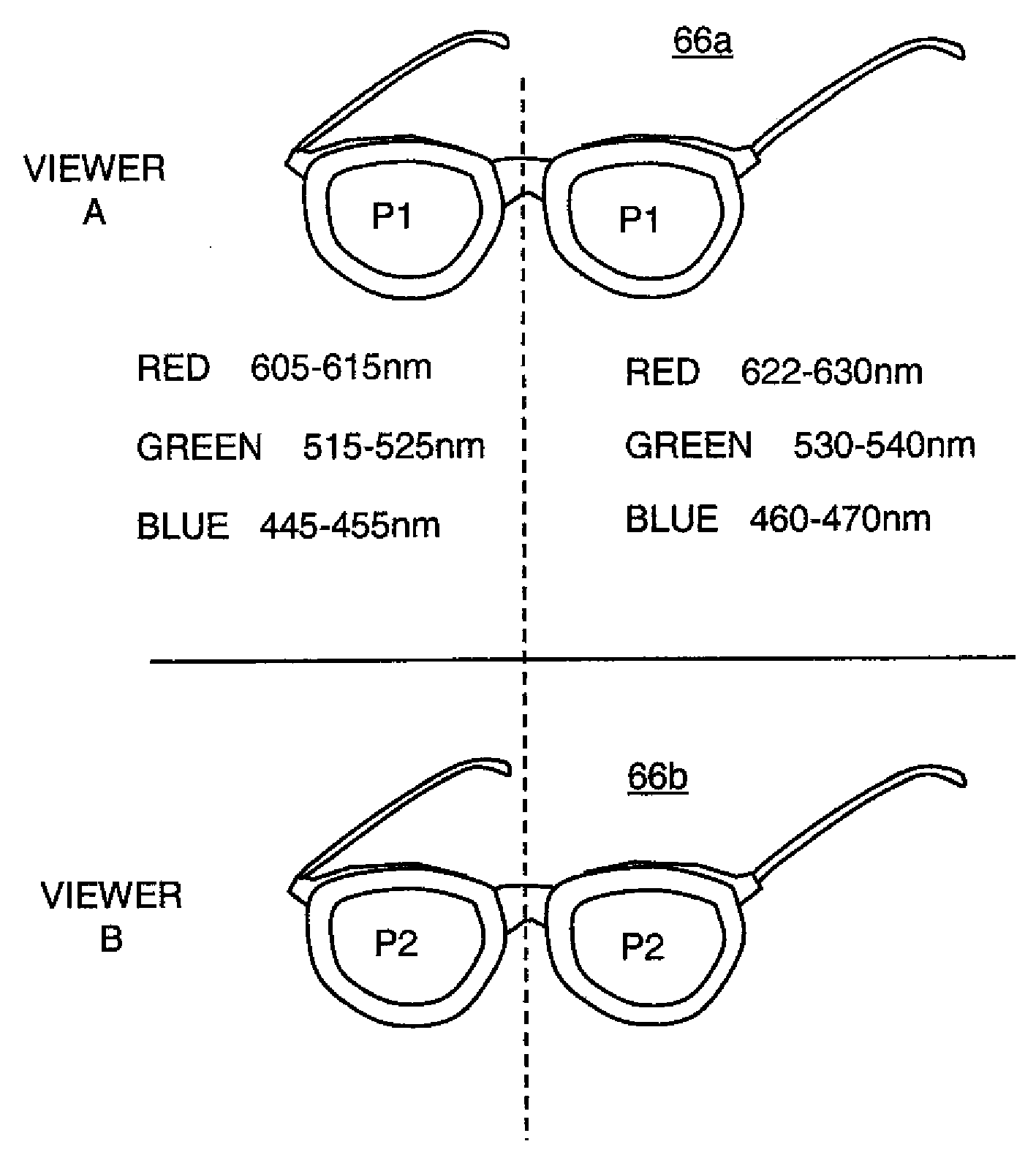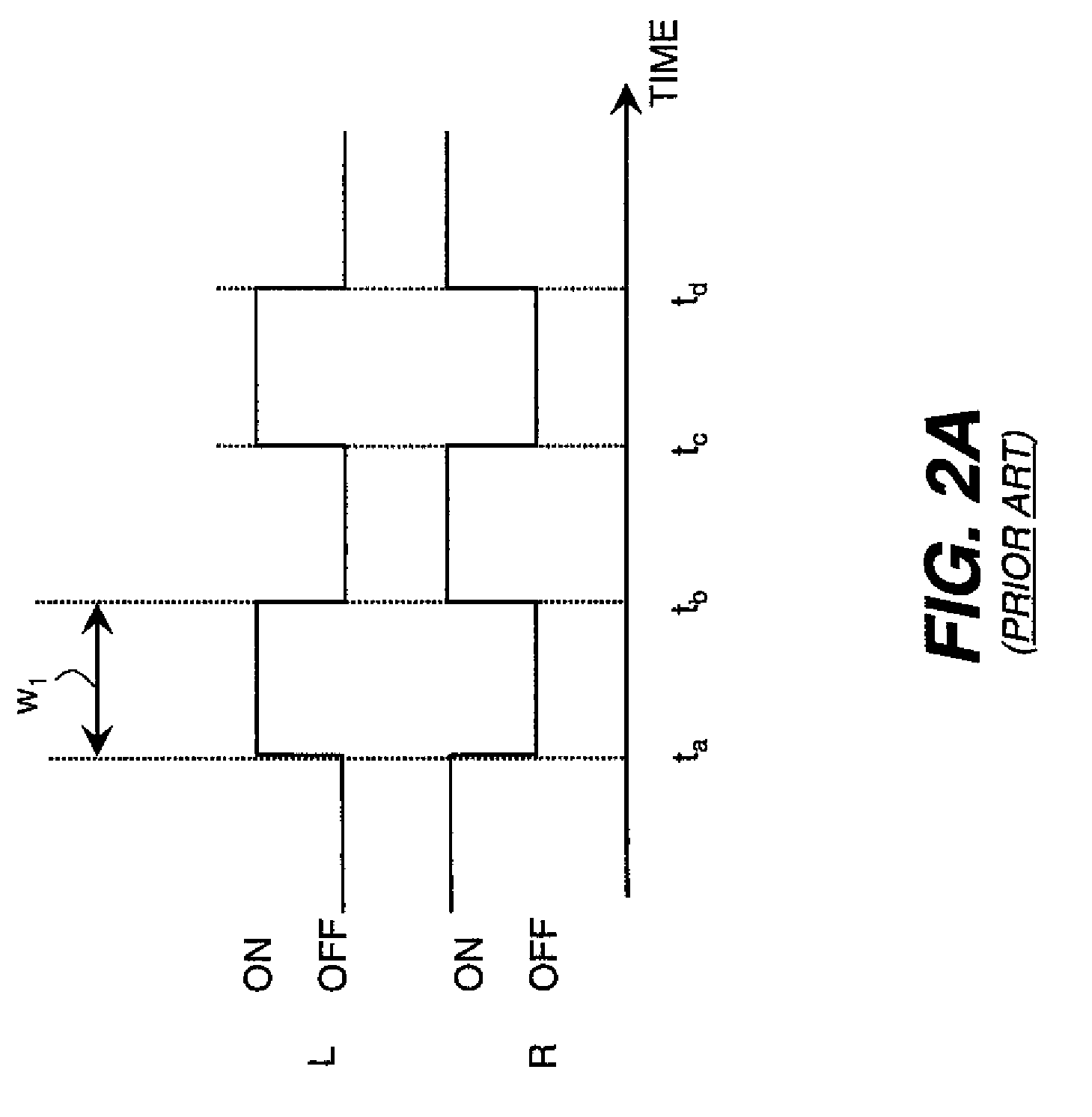Dual-view stereoscopic display using linear modulator arrays
a stereoscopic display and linear modulator technology, applied in the field of display equipment, can solve the problems of additional requirements for inability to meet the requirements of robust display equipment, and inability to meet the requirements of theater design and layout,
- Summary
- Abstract
- Description
- Claims
- Application Information
AI Technical Summary
Benefits of technology
Problems solved by technology
Method used
Image
Examples
embodiment 3
[0101]Embodiments E3 and E4 shown in FIG. 13 use spectral band differences to display stereo images with different timing. Embodiments E3 and E4 may use the apparatus shown in FIG. 12 without the optional striped polarization modifiers 40r, 40g, and 40b. Each of the bilinear GEMS device pairs would have 1080 pixels and receive light of one spectral band S1 or S2 used for separating left- and right-eye stereoscopic images. In Embodiment 3, during the first half of the image refresh cycle the left-eye image for the first set of viewers (A) is displayed using spectral band S1 while the right-eye image of the first set of viewers (A) is blocked and the right-eye image for the second set of viewers (B) is displayed using spectral band S2 while the left-eye image for the second set of viewers (B) is blocked. During the second half of the image refresh cycle, the right-eye image for the first set of viewers (A) is displayed using spectral band S2 while the left-eye image for the first set ...
embodiment 5
[0102]Embodiment E5 shown in FIG. 13 uses the apparatus in FIG. 5 with the dual spectral band light source arrangement of FIG. 9. As in embodiments E1 and E2 the GEMS device may have 2160 pixels in order to display the equivalent of 1080 pixels, with the odd-numbered pixels passing polarization P1 and the even-numbered pixels passing orthogonal polarization P2. Embodiment 5 uses polarization to distinguish left-eye and right-eye stereoscopic pairs for each set of viewers while using spectral band variation for timing to alternate between eyes. During the first half of an image refresh cycle, light source S1 is on and light source S2 is off; during the second half of an image refresh cycle, light source S2 is on and S1 is off. During the first half of an image refresh cycle, the decoding devices for each of the first set of viewers (A) transmit light from light source S1 to the left eyes of the first set of viewers (A) while blocking light from light source S1 to the right eyes of th...
PUM
 Login to View More
Login to View More Abstract
Description
Claims
Application Information
 Login to View More
Login to View More - R&D
- Intellectual Property
- Life Sciences
- Materials
- Tech Scout
- Unparalleled Data Quality
- Higher Quality Content
- 60% Fewer Hallucinations
Browse by: Latest US Patents, China's latest patents, Technical Efficacy Thesaurus, Application Domain, Technology Topic, Popular Technical Reports.
© 2025 PatSnap. All rights reserved.Legal|Privacy policy|Modern Slavery Act Transparency Statement|Sitemap|About US| Contact US: help@patsnap.com



